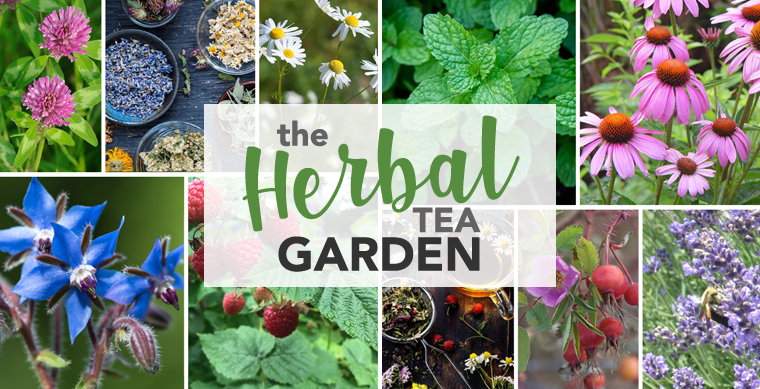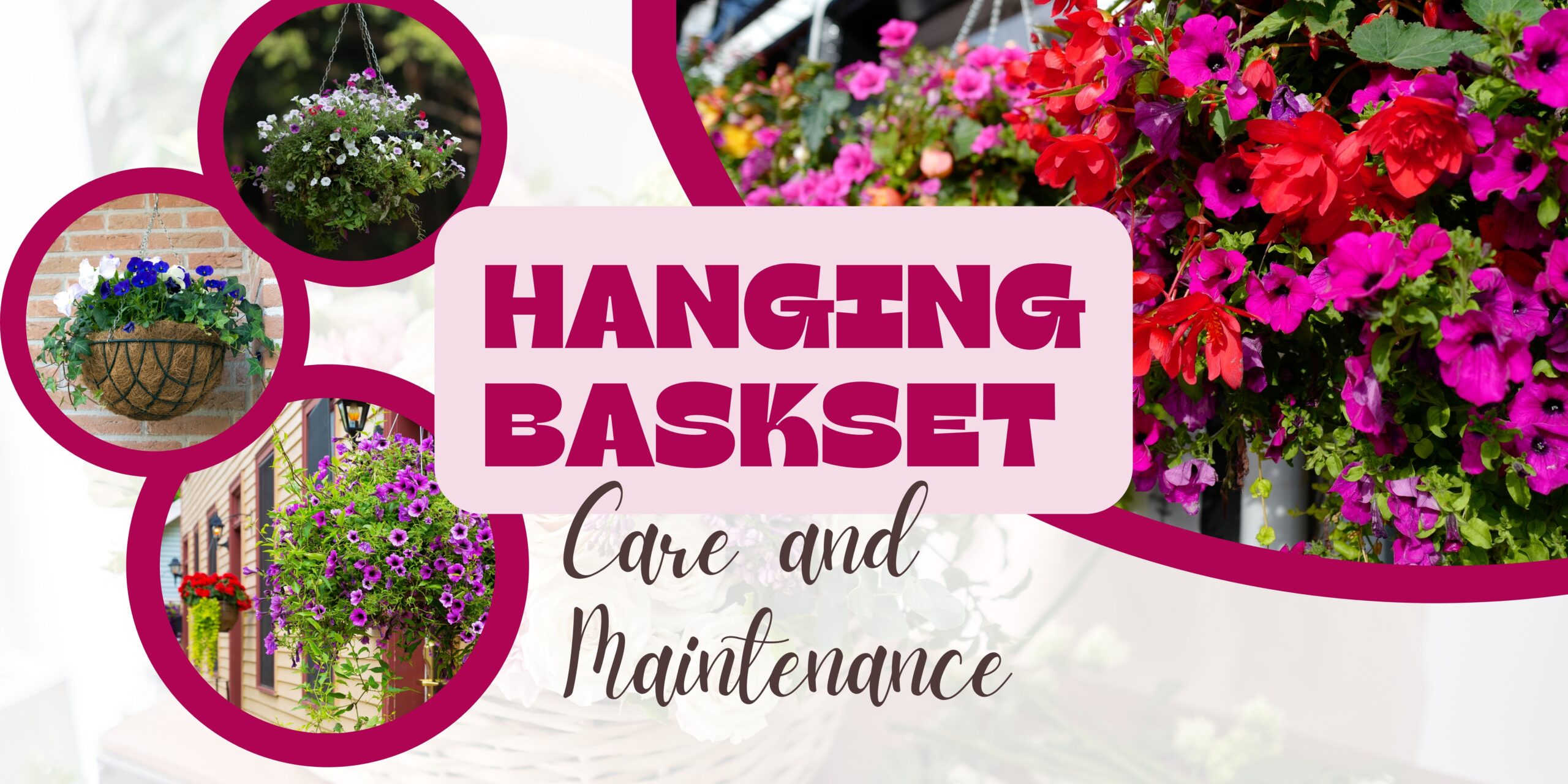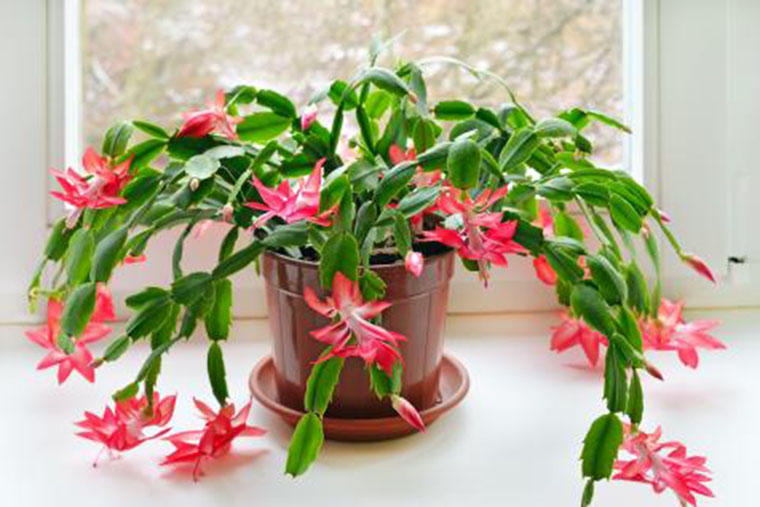The Herbal Tea Garden
Did you know we can grow a surprisingly large number of plants commonly used in herbal teas, right here in our own backyards?! It’s true. Some of them have to be grown as annuals, but some are also prairie hardy perennials, shrubs, and even trees. There are a number of great reasons to grow your own herbal tea garden! First, it is a great way to ensure an abundance of organically grown herbs that can easily be harvested, dried, and stored for years to come at pennies on the dollar. Second, you’ll have your own apothecary to mix and match different herbals to make the perfect cup of tea, whatever your need. Whether you’d like a medicinal brew to help you fight off that nasty cold or a pleasant cup to calm your mind on a restless night, having your own herbals on hand is super… well, handy!
Feature Plants
Annuals are herbaceous plants that will not survive our harsh Alberta winters and will need to be replanted in the spring. Many of our most used herbals will only grow as an annual in our area.
Perennials are herbaceous plants that are hardy to zone 3 and will return when the warm weather returns. We have a few perennials which can be harvested for their numerous health benefits.
Wild Perennials are herbaceous plants that grow natively across our Alberta landscape. These plants will likely find their way into your garden rather than be intentionally planted. However, some have amazing health benefits and many herbalists welcome their appearance.
Shrubs are woody multi-stemmed larger plants that are hardy in our area. Many shrubs produce flowers and berries, some of which can be used in teas.
Trees… we all know what a tree is lol. We also have a couple of trees, outside of fruit trees, which produce flowers and berries that can be used in teas.
Safety First!
Correct Identification: As with all plants, it is crucial to be sure of the correct identification before consuming any plant. A plant can be toxic and sometimes deadly if it is consumed when it has been misidentified for a similar-looking species.
Chemical Free: Plants absorb chemicals from their surrounding environment. Be sure to avoid pesticides and other harmful chemicals in your garden. Consider using organic growing methods that are chemical-free when growing plants for consumption.
Moderation: Herbal plants are often rich in nutrients and offer amazing benefits to our health. But even too much of a good thing can be harmful to our health. It is always best to be well-read on the specific plants you intend to consume. Know how much and how often it is safe to consume. Know if it is known to have interactions with certain medications or should be avoided if certain medical conditions exist. If you are unsure, seek out the help of a health care practitioner or a well-trained herbalist.
This blog is meant as an educational and informational resource. While we strive for accuracy, the information provided in this blog is not intended to replace the advice of a medical professional. Please consult your medical practitioner or herbalist before using any plants especially if you take any prescription medications, have a pre-existing condition, allergies, or if you are pregnant or breastfeeding. Kiwi Nurseries Ltd. and the author of this blog do not accept any liability or responsibility for any consequences caused by consuming or using any plants.
Annuals

Borage
Borago officinalis
Parts Used: Flowers and leaves
Taste: Pleasant cucumber-like taste
Uses: Calms the nervous system and promotes overall health
Precautions: DO NOT use borage in excess or for prolonged periods of time. Borage may contain pyrrolizidine alkaloids that can cause or worsen liver disease. Consult a health care practitioner if you are pregnant or breastfeeding.

Calendula
Calendula officinalis
Parts Used: Flower
Taste: Mild, slightly bitter
Uses: Anti-inflammatory and antioxidant
Precautions: DO NOT use if you are allergic to plants in the daisy family (Asteraceae). Consult a health care practitioner if you are pregnant or breastfeeding.
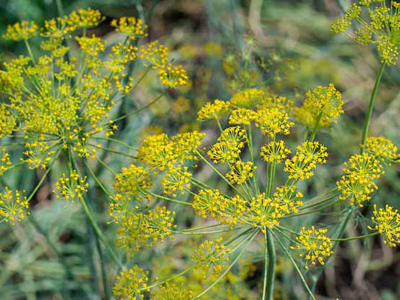
Fennel
Foeniculum vulgare
Parts Used: Leaves, seeds, and bulb
Taste: Sweet and herbal, with a distinct taste of anise
Uses: Promotes healthy digestion
Precautions: DO NOT use if you are allergic to plants in the parsley (Apiaceae) family. Consult a health care practitioner if you are pregnant or breastfeeding.
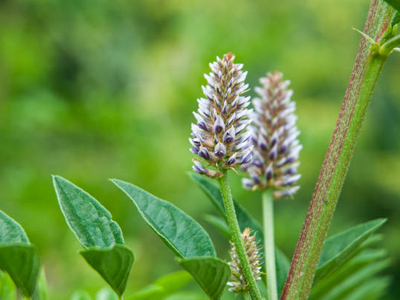
Licorice
Glycyrrhiza glabra
Parts Used: Root
Taste: Sweet and earthy
Uses: A natural sweetener that promotes overall health
Precautions: DO NOT use if you are allergic to plants in the legume (Fabaceae) family. People with high blood pressure, heart disease, or impaired kidney or liver function should NOT consume Licorice. Licorice is considered safe for short-term use, DO NOT use for longer than 2 weeks. Consult a health care practitioner if you have low potassium levels or if you are taking diuretics, corticosteroids, cardiac glycosides, or other potassium-depleting medications. Consult a health care practitioner if you are pregnant or breastfeeding.
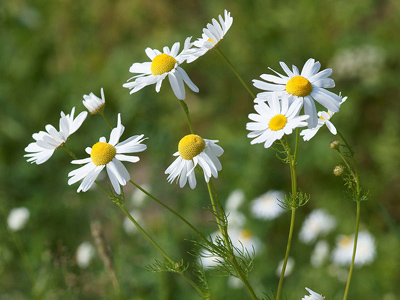
German Chamomile
Matricaria chamomilla
Parts Used: Flower
Taste: Floral and fragrant
Uses: Calms the nervous system and supports healthy digestion
Precautions: DO NOT use if you are allergic to plants in the daisy family (Asteraceae). Consult a health care practitioner if you are pregnant or breastfeeding.
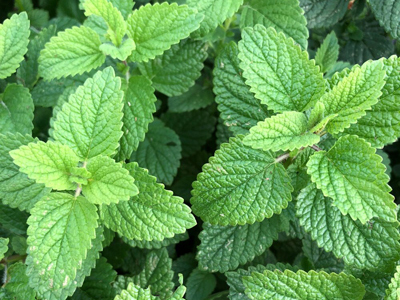
Lemon Balm
Melissa officinalis
Parts Used: Leaves
Taste: Mild, with subtle citrus notes
Uses: Calms the nervous system and aids in digestion
Precautions: DO NOT use if you are allergic to plants in the mint (Lamiaceae) family. May cause drowsiness. Use caution when driving or involved in activities that require mental alertness. Consult a health care practitioner if you are pregnant or breastfeeding.
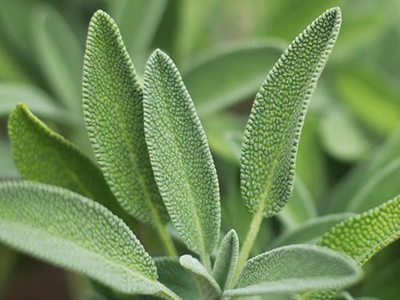
Sage
Salvia officinalis
Parts Used: Leaves
Taste: Fragrant, earthy, and refreshing with a hint of mint taste
Uses: Anti-inflammatory and promotes overall health
Precautions: DO NOT use if you are allergic to plants in the mint (Lamiaceae) family. Consult a health care practitioner if you are pregnant or breastfeeding.
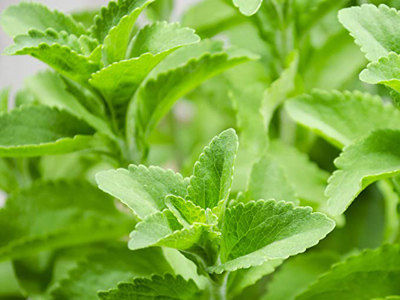
Stevia
Stevia rebaudiana
Parts Used: Leaves
Taste: Sweet
Uses: A natural sweetener that promotes overall health
Precautions: DO NOT use if you are allergic to plants in the daisy (Asteraceae) family. Consult a health care practitioner if you are pregnant or breastfeeding.
Perennials

Purple Cone Flower
Echinacea
Parts Used: Flowers, leaves, and root
Taste: Earthy and floral
Uses: Boost immune system
Precautions: DO NOT use if you are allergic to plants in the daisy (Asteraceae) family. People with autoimmune disorders or who take immunosuppressive drugs should NOT consume Echinacea. Echinacea is considered safe for short-term use, DO NOT use for longer than 2 weeks. Consult a health care practitioner if you are pregnant or breastfeeding.

Munstead Lavender
Lavandula ang. ‘Munstead’
Parts Used: Flowers
Taste: Fragrant and floral
Uses: Calms the nervous system and improves mood & sleep quality
Precautions: DO NOT use if you are allergic to plants in the mint (Lamiaceae) family. Consult a health care practitioner if you are pregnant or breastfeeding.
NOTE: Depending on the variety of Lavender it may be grown as a perennial or as an annual. Most varieties are only hardy to zone 4 or 5. Munstead can be grown as a perennial in zone 3.
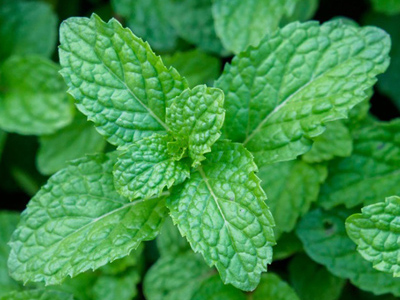
Mint
Mentha
Parts Used: Leaves
Taste: Fragrant and cooling
Uses: A natural sweetener that promotes overall health
Precautions: DO NOT use if you are allergic to plants in the daisy (Asteraceae) family. Consult a health care practitioner if you are pregnant or breastfeeding.
NOTE: There are many subspecies of mint each with its own unique flavour profile, many make great teas, including peppermint, spearmint, chocolate mint, orange mint, lemon mint, apple mint, berries and cream mint, strawberry mint, and several more.
NOTE: Depending on the variety of Mint it may be grown as a perennial or as an annual.

Bee Balm
Monarda
Parts Used: Flower petals
Taste: Citrus or spicy depending on the variety
Uses: Adds flavour and promotes overall health
Precautions: DO NOT use if you are allergic to plants in the mint (Lamiaceae) family. Consult a health care practitioner if you are pregnant or breastfeeding.
Wild Perennials

Dandelion
Taraxacum officinale
Parts Used: Leaves, flowers, and roots
Taste: Leaves and flowers are earthy, but can be bitter as the plant matures. The root can be roasted to have a taste similar to coffee.
Uses: Promotes overall health
Precautions: DO NOT use if you are allergic to plants in the daisy (Asteraceae) family. Consult a health care practitioner if you are pregnant or breastfeeding.
NOTE: Dandelion root is often used as a herbal substitute for coffee.

Red Clover
Trifolium pratense
Parts Used: Flowers
Taste: Subtle, earthy, and slightly sweet
Uses: Promotes overall health
Precautions: DO NOT use if you are allergic to plants in the legume (Fabaceae) family. Red Clover contains phytoestrogens, consult a health care practitioner if you have a hormone disorder or take medications to treat hormone imbalances. Consult a health care practitioner if you are pregnant or breastfeeding.
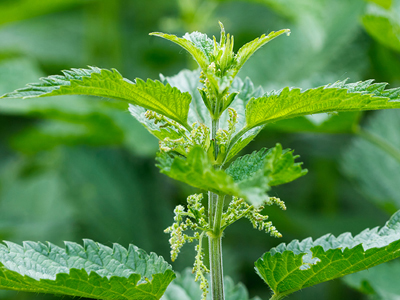
Stinging Nettle
Urtica dioica
Parts Used: Leaves
Taste: Earthy
Uses: Anti-Inflammatory that promotes overall health, especially in women
Precautions: DO NOT use if you are allergic to plants in the legume (Urticaceae) family. Consult a health care practitioner if you are pregnant or breastfeeding.
Shrubs
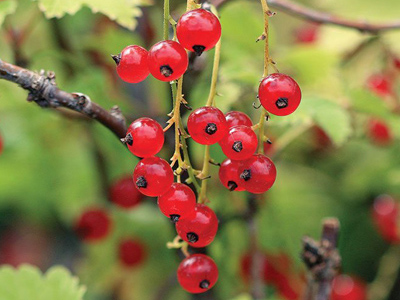
Currant
Ribes
Parts Used: Leaves and berries
Taste: Fresh and earthy with a slight tart fruity flavour
Uses: Anti-Inflammatory that promotes overall health and boosts the immune system with high levels of Vitamin C
Precautions: DO NOT use if you are allergic to plants in the Grossulariaceae family. Consult a health care practitioner if you have low blood pressure or bleeding disorders. Consult a health care practitioner if you are pregnant or breastfeeding.
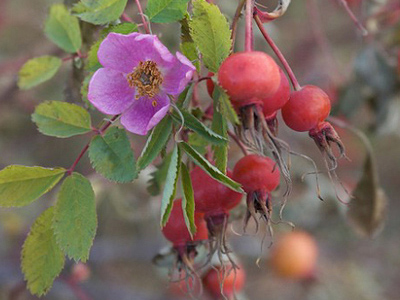
Rose
Rosa
Parts Used: Flower petals and hips
Taste: Flowers are floral and fragrant. Hips are fragrant and fruity.
Uses: Anti-Inflammatory that promotes overall health and boosts the immune system with high levels of Vitamin C
Precautions: DO NOT use if you are allergic to plants in the rose (Rosaceae) family. Consult a health care practitioner if you are pregnant or breastfeeding.
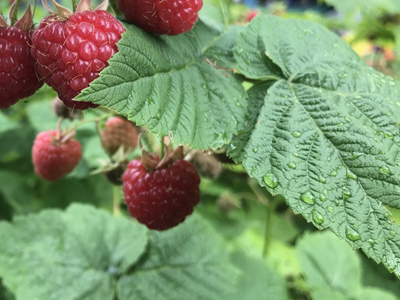
Raspberry
Rubus idaeus
Parts Used: Leaves
Taste: Full body with earthy
Uses: Anti-Inflammatory that promotes overall health, especially in pregnacy
Precautions: DO NOT use if you are allergic to plants in the rose (Rosaceae) family. Consult a health care practitioner if you are pregnant or breastfeeding.

Elderberry
Sambucus nigra
Parts Used: Leaves, flowers and berries
Taste: Sweet and tart
Uses: Antioxidant and immune system booster
Precautions: DO NOT use if you are allergic to plants in the Adoxaceae family. Consult a health care practitioner if you are pregnant or breastfeeding.
NOTE: Uncooked leaves, stems, and berries can be unsafe to consume.
Trees
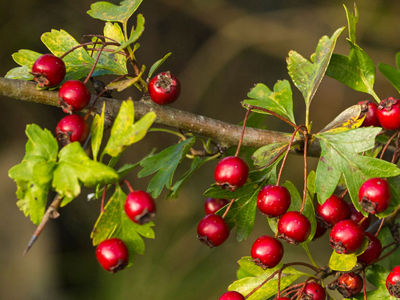
Hawthorn
Crataegus
Parts Used: Leaves, flowers, and berries
Taste: Earthy and fruity
Uses: Antioxidant and improves heart health
Precautions: DO NOT use if you are allergic to plants in the rose (Rosaceae) family. Consult a health care practitioner if you have a heart condition or take medications for a heart condition, including blood pressure medications. Consult a health care practitioner if you are pregnant or breastfeeding.
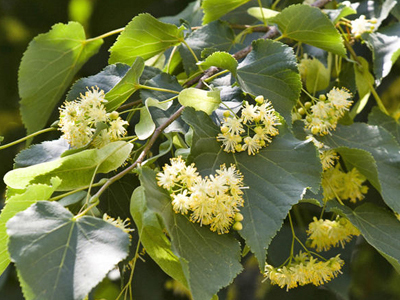
Linden
Tilla
Parts Used: Leaves, flowers, and wood
Taste: Refreshing with a hint of lemony citrus
Uses: Antioxidant and anti-inflammatory
Precautions: DO NOT use if you are allergic to plants in the Malvaceae family. It may cause drowsiness. Linden is considered safe for short-term use only, DO NOT consume for more than 2 weeks. Consult a health care practitioner if you have a heart condition or take medications for a heart condition, including blood pressure medications. Consult a health care practitioner if you are pregnant or breastfeeding.
 |
| 
